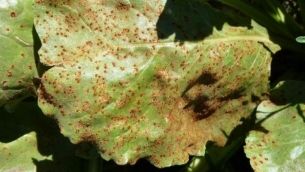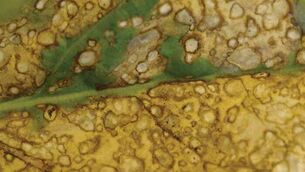Powdery Mildew - Beet

Main Host
Fodder and sugar beet.
Symptoms
Powdery mildew first appears as small surface patches of white, fluffy mycelium. The first symptoms are usually found on the underside of older leaves but it can rapidly spread so that the entire plant appears greyish-white.
Life Cycle
To overwinter, powdery mildew must have living beet material (fodder beet, sugar beet, spinach, swiss chard etc.) to survive. In the spring, wind borne spores are responsible for the infection of new crops with periods of humidity and temperatures of around 25ºC being ideal.
Weather Conditions
Hot, humid conditions, but without moisture present on the leaves are optimum for disease development.
Economic Impact
Severe attacks can significantly reduce the yield and feed value of fodder beet. Overseas, sugar beet yield losses of up to 35% have been recorded.
Control
Escolta has a label claim for the control of powdery mildew.

Powdery mildew infection






